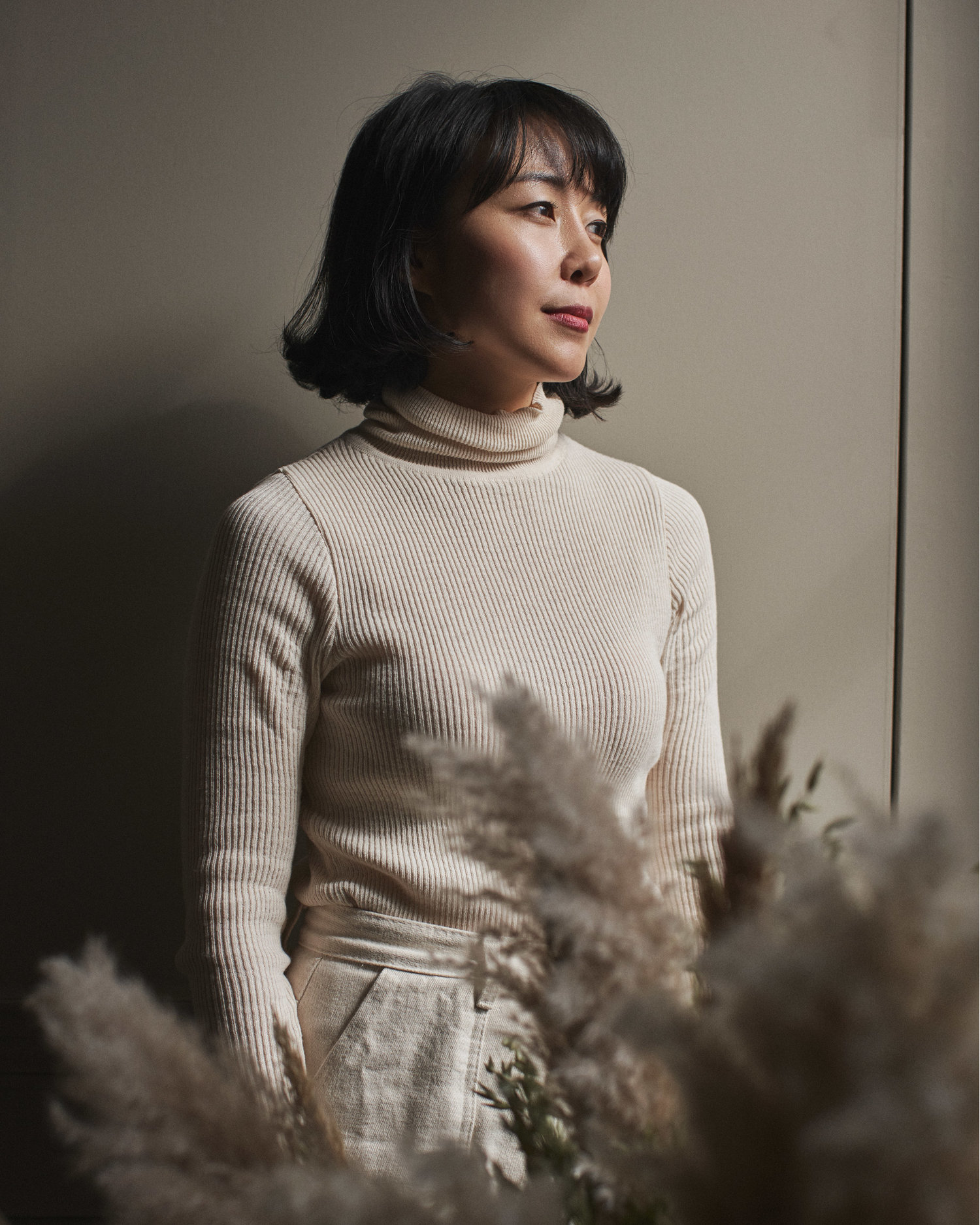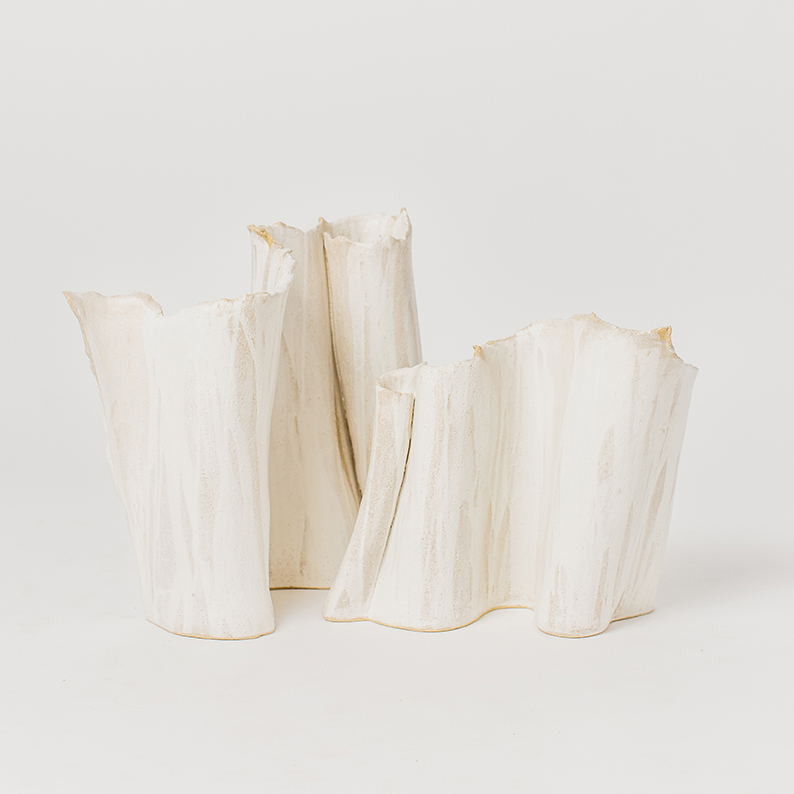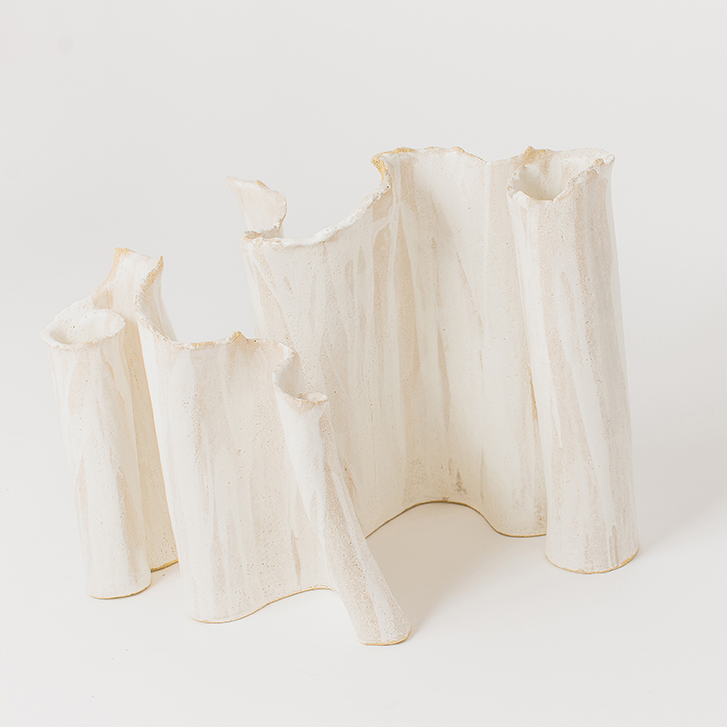On a sunny Thursday afternoon, Yoon-Young Hur, or YY as she’s known by friends, met AN Interior contributor Emily Conklin for lunch at a French bistro in the West Village, not far from Greenwich House Pottery, the studio that gave her a start with weekend classes while she was working as a full-time architect. She’s come a long way since that introduction and now maintains her own studio practice and was invited to teach the 2019 summer intensive studio course at the Irwin S. Chanin School of Architecture at the Cooper Union, where Conklin was her student.
Hur straddles the creative worlds of both art and architecture with a soft, minimalist sensibility. A holder of two B.A’s—a BFA from the School of the Art Institute of Chicago and a B.Arch from the Cooper Union—her past practice continuously inform her current work.
“At the Art Institute, I had this great connection with a professor who came from the Cooper Union,” Hur said. “For a while, I had been trying to figure out what his approach was and where it was coming from. When I found out, that’s where I went.”
Hur’s ceramics are deeply rooted in her Korean heritage. After art and architecture school, She returned home to reconnect with family and culture, and South Korea is where she honed many of her formal technical skills. “There’s this embrace of imperfection in Korean art, which differs greatly from Chinese art, for example,” Hur said. “A moon jar’s seam, as well as the depressions and collapses that can happen within the kiln—are things to be celebrated, not discarded.”
Some of her earliest work revolved around this archetype; that is said to be representative of a Korean aesthetic at large. A spherical vessel with a narrow opening at the top, this type of jar is traditionally created by throwing two semicircular bowls, inverting one, and assembling them together before firing. While it is possible to throw the entire jar with no seam, she finds that imperfect connection to be a tangible interaction with a long lineage of ceramicists. “It represents a raw and direct record of the fleeting moment,” she said. “By not over-refining my process, I perceive new surprises and results that are often beyond my expectations and preconceived ideas.”
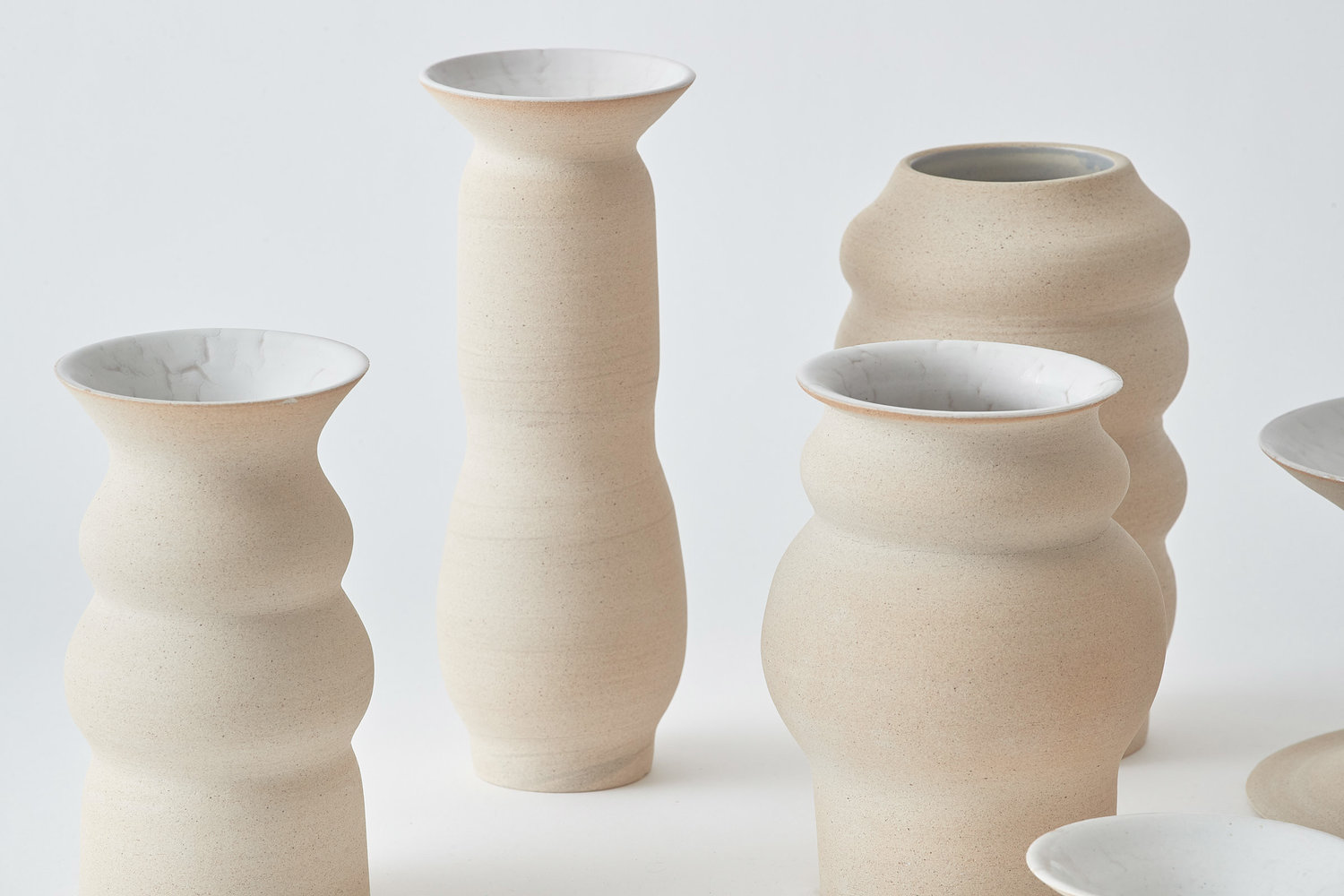
But Hur creates jars, vases, and vessels of extraordinary variation, engaging with disparate realms of the medium as well as spatial power. Her most recent series, The Fold takes many queues from her architectural training. Using a coarsely grained clay allows her to form with freedom and without using a wheel. Slabs are rolled flat, folded, and eventually arranged like walls or corridors; evoking linearity not often found in traditional ceramic practice.
“I try to express this sense of unpredictability and vulnerability in our lives through the undulating surfaces,” she explained. “They can be embraced by creating enclosures while, at the same time, opening up to different directions.” This latest series brought Hur to France this fall; where she exhibited at Paris Design Week.



“I knew that my presentation would incorporate this long table.” she said. “I thought the folds and the linearity of the new series would stand out in this context.”
In contrast, her wheel-thrown vases and vessels, on display at Bath, UK-based gallery Francis Gallery, are thoughtfully integrated in their setting. The natural color of the clay and slips harmonize with the tones of the local stone used both in gallery’s interior and exterior. The works she creates often become objects in landscapes, rather than isolated or detached objects merely on display. This architectural approach—characterized as a tension between form as an art piece and form as a designed element, is a shared sentiment in this work, informed by the education and nurturance of Hur’s spatial sensibility.
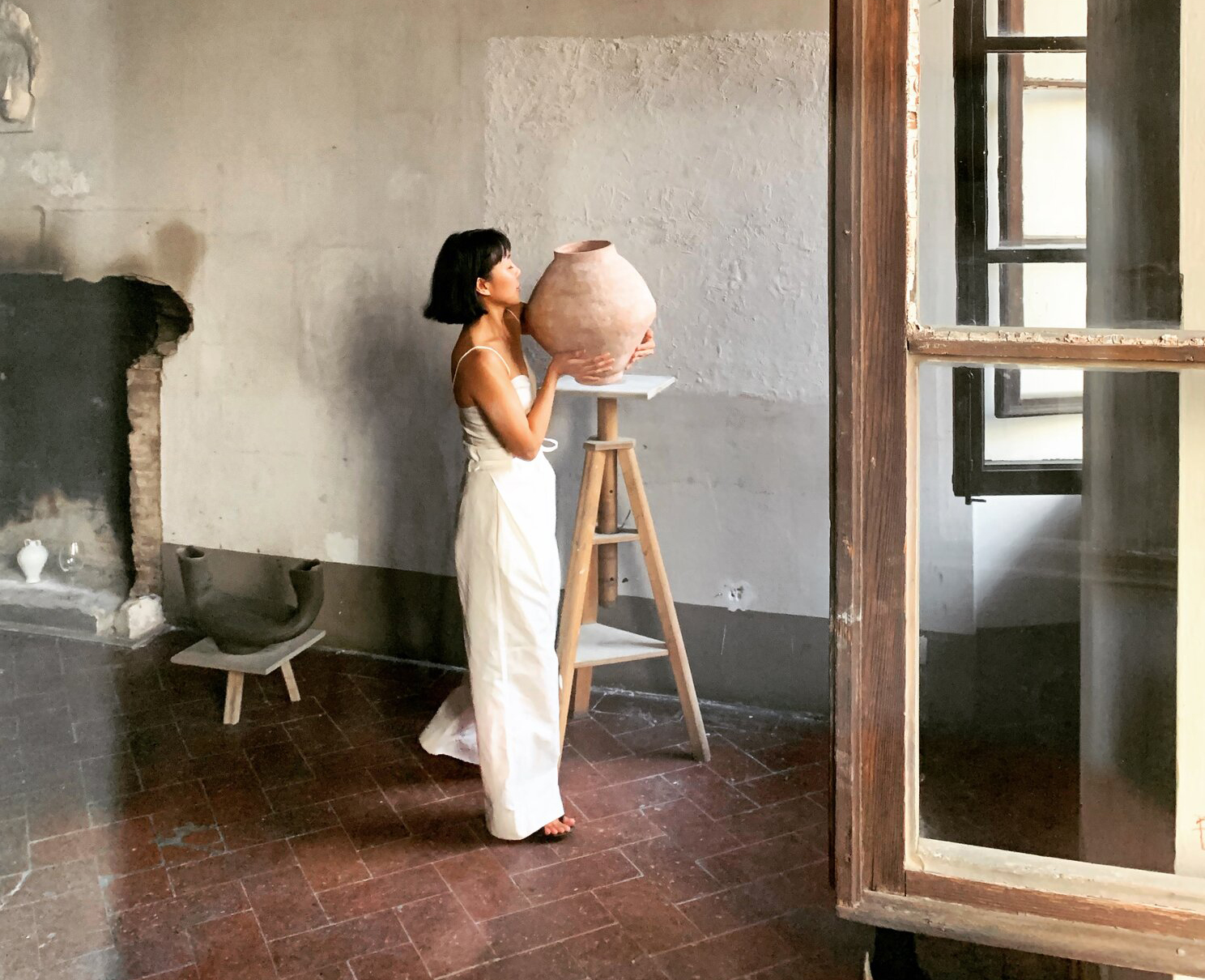
Hur’s intuitive aesthetic is apparent in her work but also informs who she decides to work with. Her free-flowing, as well as a ruled and disciplined way of thinking, derives from her background in both art and architecture. Hur once told a student stuck on an architectural model to “just break it.” Conklin recalls watching as she and the student proceeded to completely crush a paper model that the student had spent weeks working on. The result was anything but destruction; it was a sculptural change in perspective.
Header image: Yoon Young Hur (Rich Stapleton)
